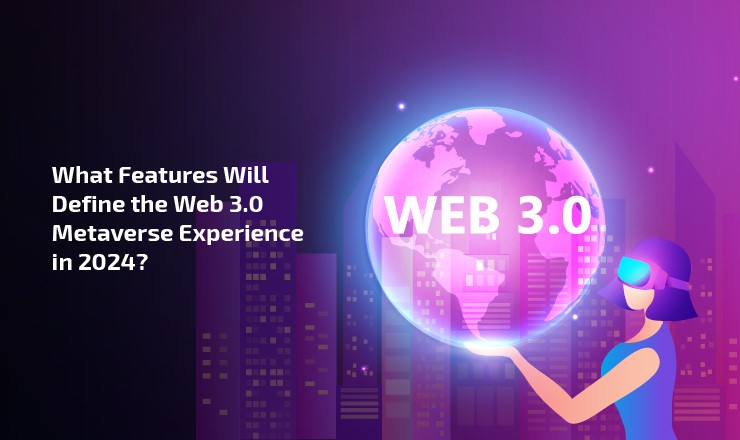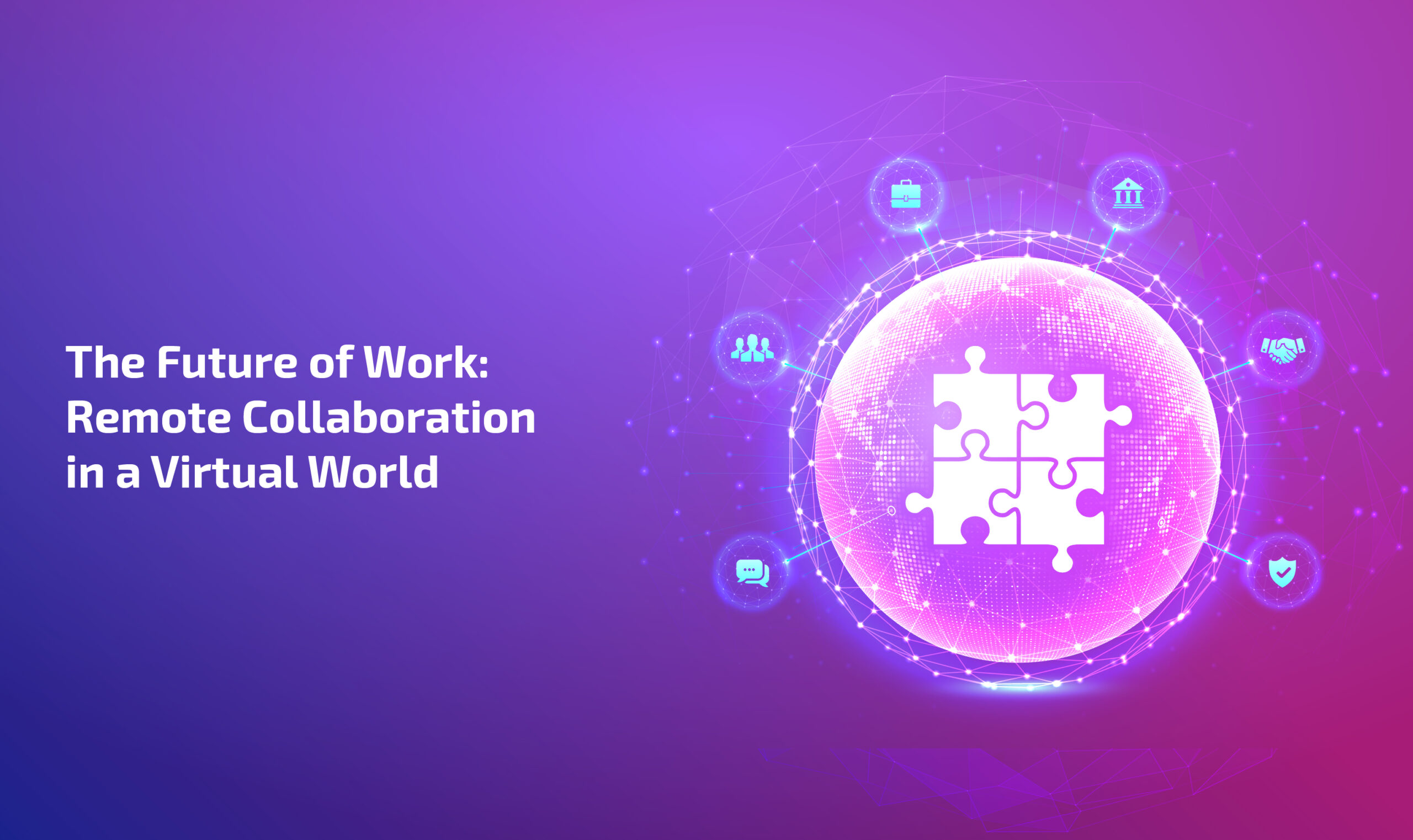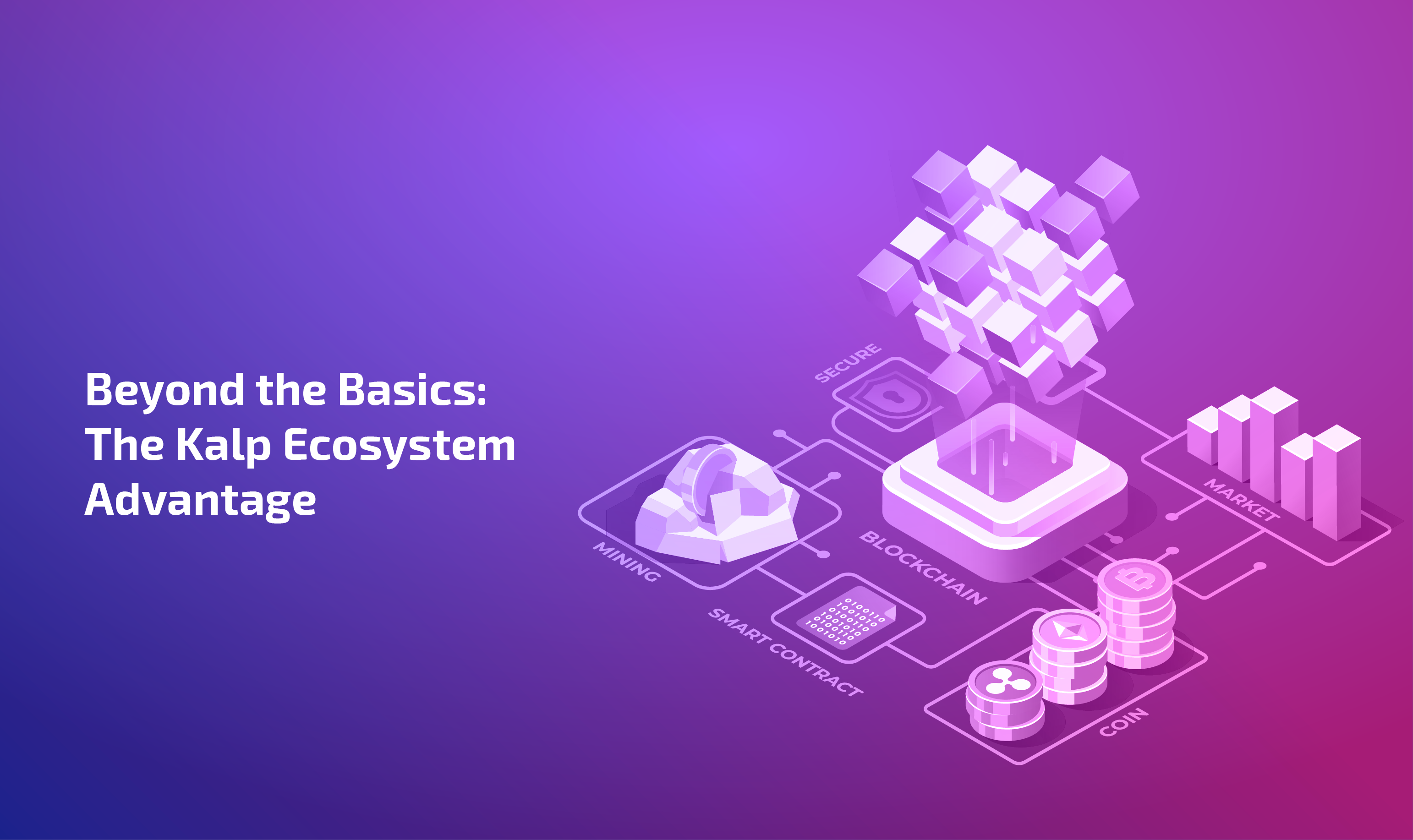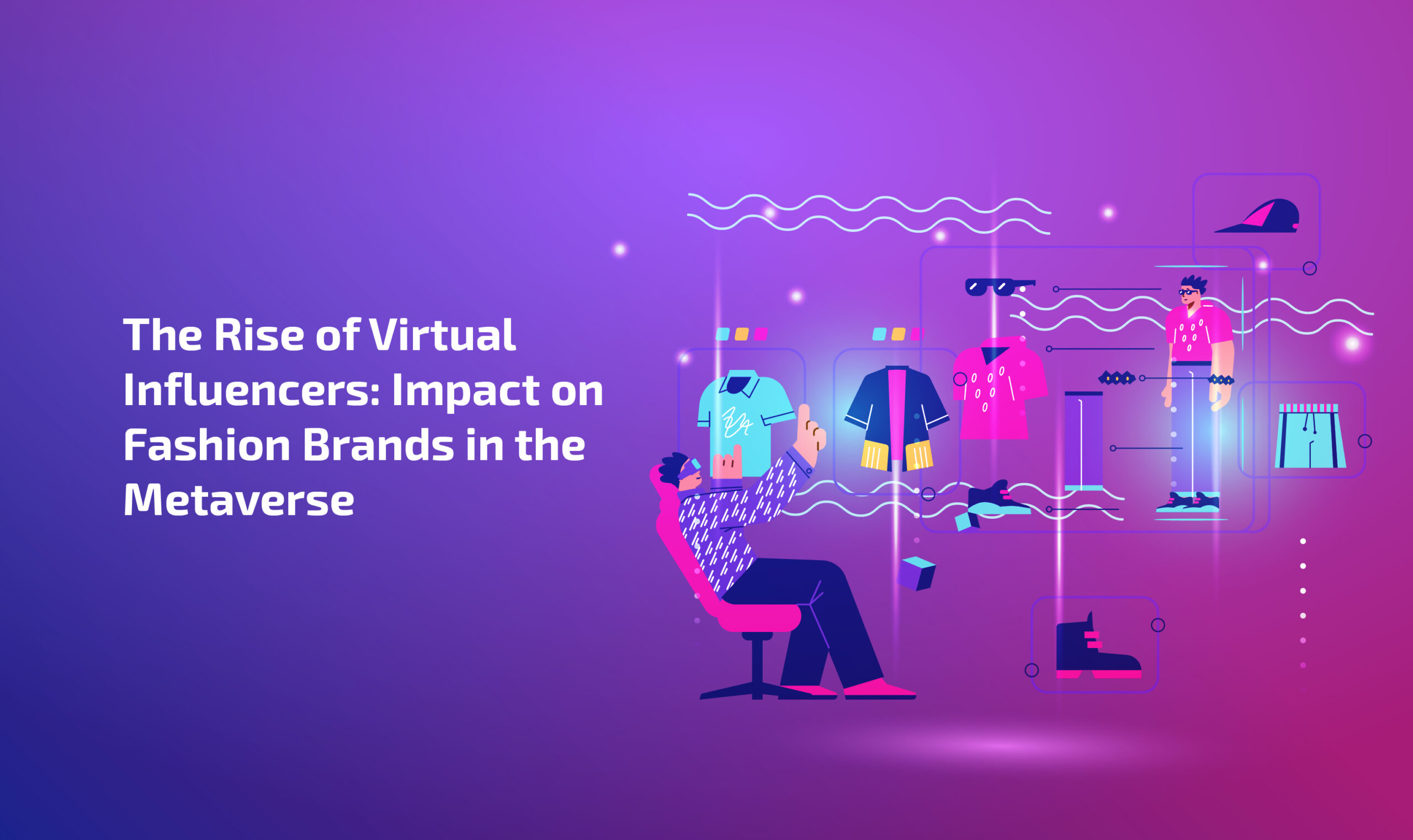
In 2024, the Web 3.0 Metaverse experience is poised to be defined by many innovative features beyond traditional online interactions. Decentralized technologies, enhanced user agency, immersive virtual environments, and seamless integration of real-world elements mark this evolution.
The convergence of Web 3.0 and Metaverse is reshaping the digital landscape, offering a transformative and immersive online experience. The word “Web 3.0” refers to the next generation of the World Wide Web. It is denoted by decentralized, interconnected, and intelligent systems. Simultaneously, the Metaverse represents a collective virtual shared space that intertwines with the physical world.
Together, these concepts are giving rise to a dynamic and interconnected ecosystem that is redefining how we interact with the digital realm. Let’s understand the key features that will shape the landscape of the Web 3.0 Metaverse, creating a more interconnected, participatory, and enriched digital experience.
Features defining Web 3.0 Metaverse Experience
Web 3.0 is believed to represent the third significant evolution of the internet, following the user-generated web (web2) and the worldwide web (web1). Web 3.0 and Metaverse are indeed two rapidly evolving concepts with significant overlap. Their shared features create fertile ground for both to potentially transform how we interact, design, and experience the digital world.
Here are some key areas where their synergy shines:
Decentralization: The foundation for both Web 3.0 and the Metaverse champions decentralization, prioritizing user ownership and control over data and assets. This aligns with Web 3.0’s core principles of open, permissionless networks, which also empower Metaverse users.
Blockchain Technology: Fueling the Web 3.0 Metaverse has one critical aspect, i.e., blockchain. Blockchain technology is a crucial building block for both, providing secure, transparent, and tamper-proof record-keeping. This enables ownership verification, secure transactions, and trustless interactions within the Metaverse. Wondering why? This is because the Metaverse relies heavily on digital assets and virtual economies.
Interoperability and Openness: Another aspect of Web 3.0 Metaverse is interoperability, which breaks down walls. Being interoperable, Metaverse allows seamless movement between different platforms. This fosters a more integrated and accessible Metaverse, where users can leverage their creations and identities across various virtual spaces.
Engaging the Senses: Both Web 3 and Metaverse aim to create immersive and engaging experiences. Web 3.0’s semantic web concept enhances information representation, potentially enriching Metaverse interactions. Additionally, Web 3.0’s focus on community governance can empower Metaverse communities to shape their virtual worlds collaboratively.
Symbiotic Relationship: Advancements in Web 3.0 technologies like AI and semantic web can enhance Metaverse functionality. Their development is intertwined! In this regard, it’s important to ensure inclusivity and equitable access to these technologies, avoiding further digital divides.
By fostering these shared features, Web 3.0 and the Metaverse have the potential to create a powerful and transformative digital ecosystem where user ownership, collaboration, and immersive experiences thrive. It will be exciting to see how these two forces shape the future of the internet and our interactions within it.
What are the Web 3.0 Metaverse challenges to consider?
The convergence of Web 3.0 and the Metaverse introduces a plethora of exciting possibilities, but it also comes with its share of challenges. Let’s delve into them in detail:
Decentralization ≠ Distributed power
One of the key features of Web3 technologies is shared ownership or decentralization of web infrastructure. But power is concentrated in Web3 token-based economies, too often centralized by those with resources already, the wealthy (even if only coin-wealthy). For this reason, equitable power structures must be proactively designed in Web3 systems.
The promise of shared ownership of web infrastructure often encounters a paradox. It means that the ownership tends to centralize among the already affluent, whether in traditional wealth or cryptocurrency holdings and corporate entities. The fundamental ethos of Web3 revolves around decentralization, emphasizing a more inclusive and democratic digital landscape.
To fulfil Web3’s decentralization promise, it is imperative to design systems that actively prevent and mitigate the formation of inequitable power structures, fostering a truly democratic and accessible digital future.
?? Blunder of over-exploitation
Some existing powerful entities try to replicate their exploitative models in the Web3 space, potentially undermining its potential for a more equitable and user-centric Internet. These entities gain power by extracting resources or values from others, often unfairly or unsustainably. This could involve practices like data collection, manipulation, or unequal access to opportunities.
Another aspect of this exploitation applies to the use of blockchain networks, which is integral for a seamless Web 3.0 Metaverse experience. Traditional blockchain networks, especially those using PoW, can consume substantial energy. This has raised environmental concerns, especially when powered by non-renewable energy sources, contributing to carbon emissions and exacerbating climate change.
Often, business models are designed to evade financial or environmental responsibilities to platform users. What we need today is energy-efficient blockchain technology to make metaverse companies or metaverse users accountable and responsible.
Trust > Decentralization
Trust among the community requires more than just decentralization. People who are developing distributed technologies frequently assert that “trust” is ingrained in the systems. Nevertheless, it isn’t.
Among other things, developing trust involves sincere participation and attentive listening. How will people be harassed and mistreated by this technology? This kind of issue is common, especially considering that there is no grievance redressal mechanism in the metaverse ecosystem.
Finding a balance between innovation and morality will be essential to responsibly and inclusively navigate the Web 3.0 metaverse landscape.
MAI: A Complete Suite to Participate in Web3.0 Metaverse
Web 3 is here to stay, and the Metaverse won’t exist in isolation. This is where MAI comes in as a solution. What we offer is a comprehensive suite for participating in this Web 3.0 Metaverse. If you like to position yourself and be at the forefront in this digital frontier, we are here. We provide not only the tools and technologies necessary for seamless integration but also address three critical challenges that you have read above.
Our commitment to decentralized infrastructure and security ensures a robust foundation, safeguarding data privacy and user security. Simultaneously, we tackle the issue of power concentration in Web3 token-based economies, striving for a more equitable and inclusive digital ecosystem. Moreover, our solutions address energy efficiency, acknowledging the importance of sustainability in the evolving dynamics of Web 3.0.
By choosing our company, enterprises gain access to cutting-edge technologies and embrace a future where innovation, security, and sustainability harmoniously coexist.
Join us in shaping the future of the decentralized, interconnected, and immersive digital experience that Web3.0 Metaverse promises.








